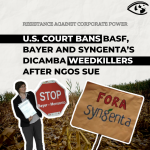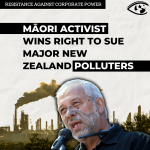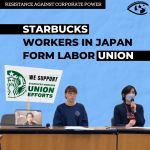Methyl Bromide Alternatives
Methyl bromide is used principally as a fumigant to control a wide range of pests in soils, commodities and structures. Of the 1992 global sale of methyl bromide: 75 percent was used for soil treatment (nursery crops, vegetables, fruits, tobacco) and over 20 percent was used for the fumigation of durable commodities (cereal grains, dried fruits and nuts, timber), perishable commodities (fresh fruits, vegetables, cut flowers) and structures (food production and storage facilities). Although no single magic bullet exists to replace methyl bromide for all uses, the United Nations Environment Programme's 1994 Report of the Methyl Bromide Technical Options Committee reports that for over 90% of current uses of methyl bromide, alternatives either already exist or are in an advanced state of development.
Soil Treatment
Alternatives include Integrated Pest Management (IPM), crop rotation, altering planting time, artificial plant growth substrates, deep ploughing, flooding/water management, fallowing, cover crops, living mulches, fertilization/plant nutrition and plant breeding and grafting. Additionally, physical methods such as soil solarization, steam treatments, superheated or hot water treatments and wavelength-selective plastic mulches are alos effective replacements.
Aside from IPM (which may include the use of some pesticides), non-chemical alternatives do not require extensive regulatory approval.
Farmers in California have already implemented a variety of non-chemical alternatives and farmers are pioneering the use of special strains of bacteria and viruses to kill pests. In the San Joaquin Valley, farmers use synthetic pheromones which produce scents identical to those given off by insects during mating cycles, thereby confusing pests.
Durable and Perishable Commodities
Alternatives such as controlled and modified atmospheres, physical methods and biological control methods are already being used on durables. In addition to these methods, alternative treatments for perishables include pest-free zones, inspections, cold storage irradiation and combinations of these treatments. The US Department of Defense has implemented non-chemical alternatives for the transport of durables and perishables and has found the new system to be effective and economical.
Structures
In addition to the non-chemical alternatives listed above, pest management in structures is achieved through some IPM procedures. For non-chemical alternatives to work, structures must be well maintained and constructed. Unfortunately, the government has funded little research into non-chemical alternatives since methyl bromide is the only fumigant currently allowed for quarantine treatments on ships in many countries.
Reproduced with permission from Ozone Action
- 181 Food and Agriculture



